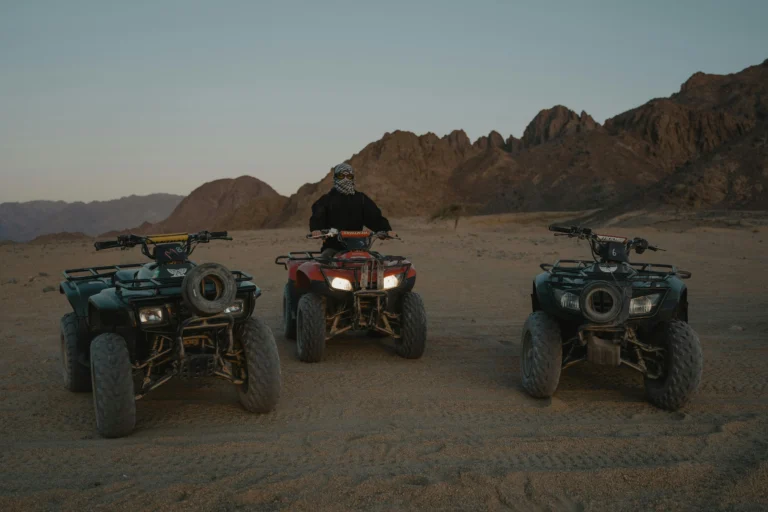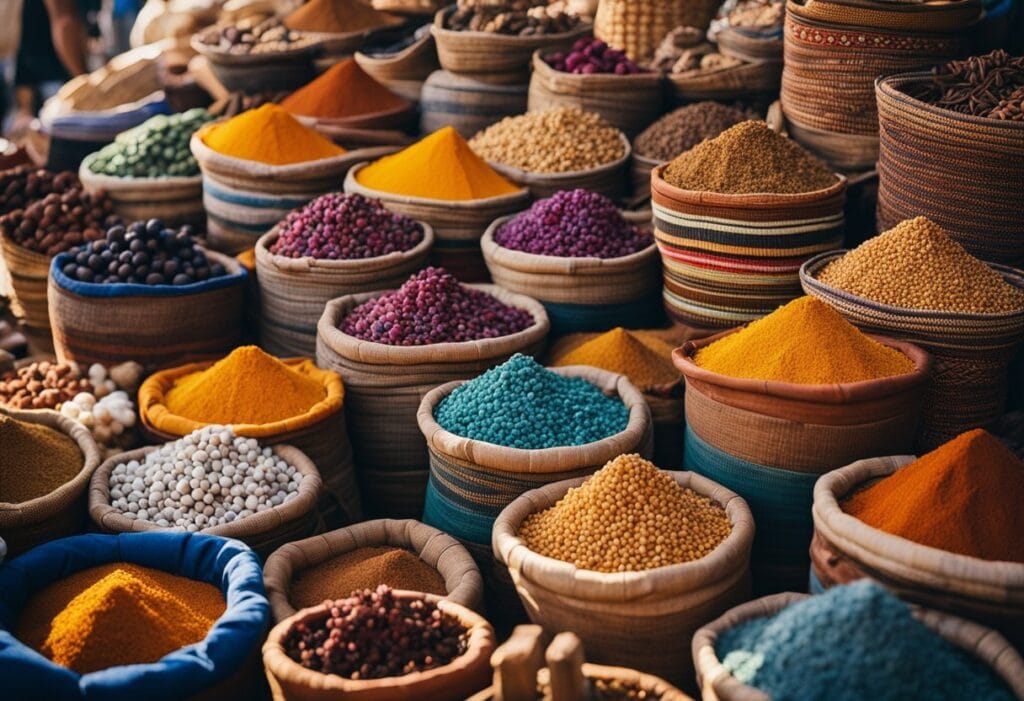
Morocco offers a vibrant blend of ancient traditions and modern experiences waiting to be discovered in 2025. This North African gem promises unforgettable adventures for cultural enthusiasts from the bustling medinas of Marrakech to the serene Sahara Desert. The colorful markets and narrow streets create the perfect backdrop for immersive exploration.
Table of Contents
When you explore Morocco in 2025, you’ll encounter a rich tapestry of cultural festivals, from spiritual pilgrimages to energetic music events that showcase the country’s diverse heritage. Your journey might take you from the Atlantic Coast to the Rif Mountains, through the winding alleys of Fes and the vibrant energy of Marrakech’s famous Jemaa el-Fnaa square.
Prepare to engage all your senses as you wander through souks, ride camels across golden dunes, and uncover ancient Roman ruins and kasbahs. Morocco’s unique blend of Berber, Arab, and French influences creates a cultural mosaic unlike anywhere else in the world, making 2025 the perfect time to experience this fascinating country.
Historical Landmarks & Architecture
Morocco’s rich history has left an impressive collection of architectural treasures across the country. These historical sites blend various cultural influences from Berber, Arab, European, and African traditions, creating a unique visual legacy that you can explore in 2025.
Imperial Cities and Their Ancient Medinas
When you visit Morocco’s historic imperial cities, you’ll step into living museums. Fez, Morocco’s oldest imperial city, houses the world’s largest car-free urban area – the Fez Medina. This UNESCO World Heritage site features the Al-Qarawiyyin, founded in 859 and considered the world’s oldest university.
Marrakech captivates with its iconic Koutoubia Mosque and sprawling medina. The vibrant Jemaa el-Fnaa square transforms from a daytime market to an evening festival.
In Meknes, you’ll find impressive gates like Bab Mansour and the Royal Stables. Rabat, the current capital, blends modern developments with historical sites including the Hassan Tower and Chellah Necropolis.
The “Blue City” of Chefchaouen offers a uniquely photogenic experience with its blue-washed buildings nestled in the Rif Mountains.
Kasbahs and Fortresses: Vestiges of the Past
Southern Morocco reveals dramatic kasbahs and fortified structures set against desert landscapes. The most famous, Ait Ben Haddou, is a stunning example of earthen clay architecture that has served as a backdrop for numerous films.
The Kasbah of Telouet offers a glimpse into the lavish lifestyle of the once-powerful Glaoui family. Its ornate interior contrasts with its deteriorating exterior.
In the Draa Valley, you’ll discover a string of kasbahs and ksour (fortified villages) along ancient caravan routes. These mud-brick structures blend seamlessly with their surroundings.
The Kasbah of Taourirt in Ouarzazate showcases intricate decoration and complex construction. Nearby, explore Roman ruins that reveal the country’s diverse historical influences.
These fortifications serve as powerful reminders of Morocco’s strategic importance along historic trade routes and the ingenuity of its traditional architecture.
explore morocco: Cultural Festivals and Events
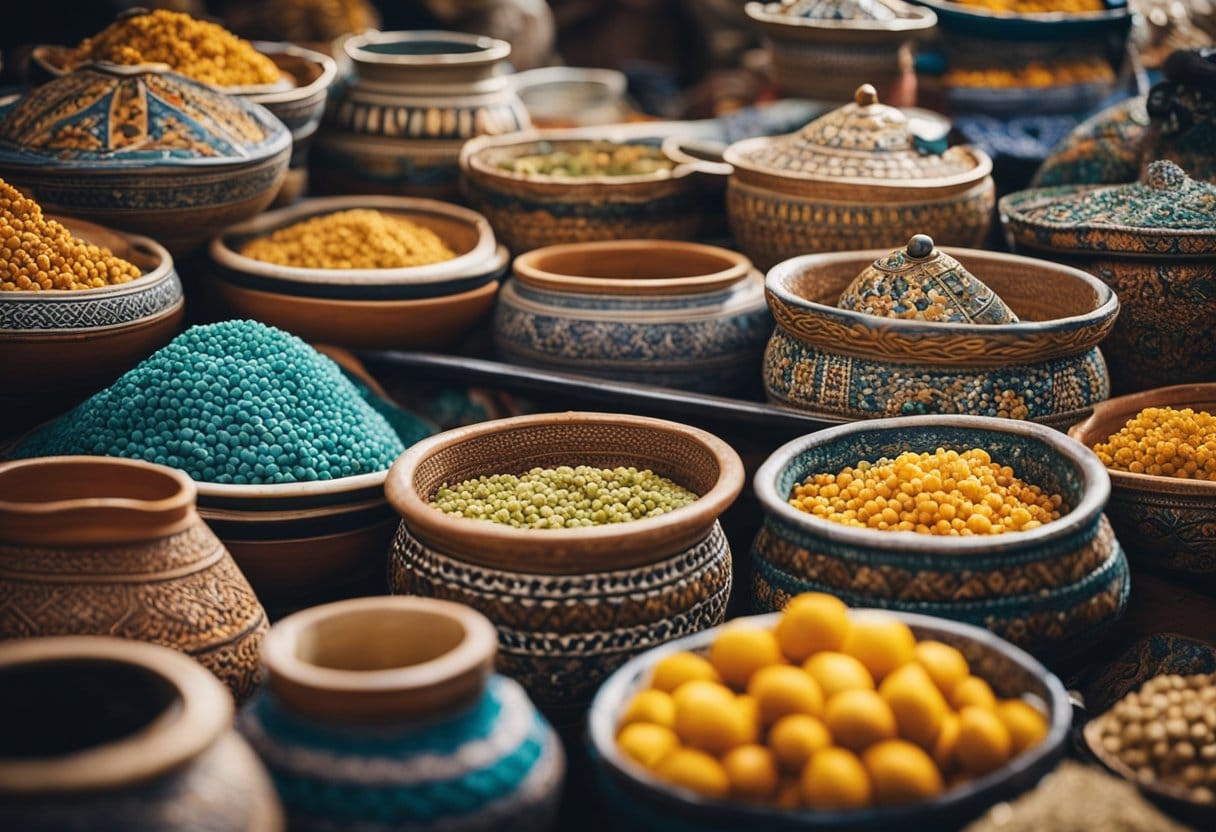
Morocco offers an exciting calendar of traditional celebrations that showcase the country’s rich heritage. You can immerse yourself in rhythmic music, colorful traditions, and authentic cultural experiences throughout 2025.
Gnaoua Music Festival in Essaouira
The Gnaoua Music Festival transforms the coastal city of Essaouira into a vibrant celebration of music and culture. Held annually in June, this four-day event attracts thousands of visitors from around the world.
You’ll experience hypnotic Gnaoua music performances featuring traditional instruments like the guembri and qraqeb. The festival showcases both traditional Gnaoua masters and fusion performances with jazz, blues, and rock musicians.
The festival isn’t limited to music. You can explore art exhibitions, workshops, and street performances throughout Essaouira’s picturesque medina. Many performances are free to attend in public squares.
For the best experience, book accommodation well in advance as the city fills quickly during the festival. Consider staying in a traditional riad to enhance your cultural experience.
Rose Festival in Kelaa-des-Mgouna
In the Valley of Roses, the annual Rose Festival celebrates the harvest of Damask roses each May. This vibrant celebration transforms Kelaa-des-Mgouna into a fragrant paradise of pink and red blooms.
You’ll witness local women gathering roses at dawn, a centuries-old tradition that produces rose water and essential oils. The festival features a colorful parade with flower-decorated floats and the crowning of the Rose Queen.
Traditional music and dance performances fill the streets. Local artisans sell handcrafted rose products like soaps, creams, and perfumes—perfect souvenirs from your Moroccan adventure.
Don’t miss the opportunity to visit local distilleries to learn about the rose water production process. For an authentic experience, join a guided tour of the rose fields in early morning when harvesting takes place.
Fes Festival of World Sacred Music
The Fes Festival of World Sacred Music brings together musicians and spiritual performers from diverse traditions. Held in the ancient city of Fes, this festival creates a powerful atmosphere of cultural exchange.
You’ll enjoy performances in breathtaking venues including the Bab Al Makina palace square and intimate courtyard concerts in traditional riads. The festival features Sufi nights, where you can experience the mesmerizing whirling dervishes.
The festival program includes:
- Morning concerts: Traditional performances in historic venues
- Afternoon forums: Discussions on spirituality and culture
- Evening performances: Major concerts featuring international artists
For the full experience, participate in the festival’s workshops and seminars on music and mysticism. The festival typically runs for nine days in May or June depending on the year.
Culinary Tours and Tastings
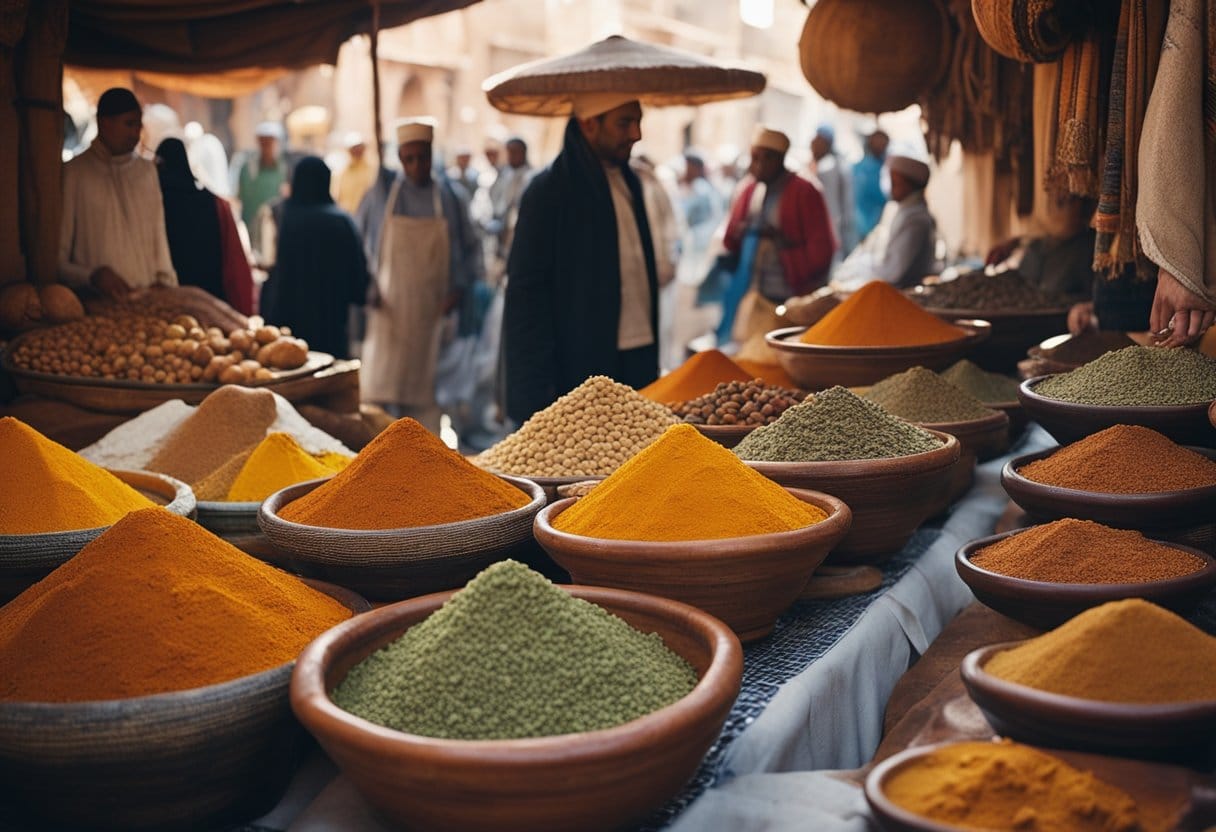
Morocco’s cuisine offers a sensory journey through centuries of cultural influences. Food experiences in this North African gem combine tradition, hospitality, and flavors that tell stories of the country’s rich heritage.
Tagine and Couscous Cooking Classes
Culinary tours in Morocco typically feature hands-on tagine and couscous workshops. These iconic dishes form the backbone of Moroccan cuisine, with regional variations throughout the country.
In Marrakech and Fez, you’ll find cooking schools where local chefs teach traditional methods passed down through generations. You’ll learn to balance spices like cumin, coriander, and the distinctive ras el hanout blend.
Many classes begin with market visits where you’ll select fresh ingredients. The slow-cooking process of tagine allows you to understand how Moroccans transform simple ingredients into complex flavors.
Popular Cooking Experiences:
- Half-day workshops in riads (traditional homes)
- Multi-day culinary retreats in the Atlas Mountains
- Farm-to-table experiences in rural communities
Street Food in Marrakech
The narrow alleys of Marrakech’s medina transform into a food lover’s paradise when night falls. Street food tours guide you through the bewildering array of stalls and vendors at Jemaa el-Fnaa square.
You’ll sample staples like harira (hearty soup), merguez sausages, and freshly baked khobz (Moroccan bread). Don’t miss msemen—flaky square pancakes often served with honey or jam.
Morocco’s street food scene offers insights into daily life and eating habits. Local guides explain the cultural significance of dishes while ensuring you discover hidden gems away from tourist traps.
Snail soup, sheep’s head, and grilled sardines might challenge your comfort zone, but they represent authentic Moroccan culinary traditions.
Moroccan Mint Tea and Pastries
Tea ceremonies in Morocco showcase the country’s famous hospitality. You’ll witness the theatrical pouring of mint tea from height—creating a frothy top while cooling the beverage.
Culinary tours often include pastry tastings alongside tea service. Sample honeyed pastries like chebakia (sesame cookies), ghriba (almond cookies), and briouat (sweet phyllo triangles).
In 2025, specialized tea and pastry workshops are becoming increasingly popular. These experiences teach you proper brewing techniques and the cultural etiquette surrounding tea service.
Many tours include visits to traditional bakeries where you’ll see craftspeople creating intricate pastries by hand. The sweet-savory balance in Moroccan desserts—often incorporating orange blossom water, cinnamon, and almond—creates distinctive flavor profiles you won’t find elsewhere.
Outdoor Adventures & Nature Excursions
Morocco offers diverse landscapes that create perfect settings for unforgettable outdoor experiences. From golden sand dunes to rugged mountain trails and windswept beaches, nature enthusiasts will find adventure in every corner of this North African gem.
Camel Treks in the Sahara Desert
Experience the magic of the Sahara Desert with a traditional camel trek across golden dunes. These unforgettable desert journeys typically begin at sunset when temperatures cool and the sand glows with warm hues.
Most tours include:
- Guided camel rides with experienced local guides
- Overnight stays in desert camps
- Traditional Moroccan meals under the stars
- Stunning photography opportunities
You’ll sleep in a Berber tent surrounded by endless sand dunes. Many visitors describe the absolute silence of the desert night and the brilliant blanket of stars as truly life-changing experiences.
Luxury tent options are available for those seeking comfort while still connecting with nature. Plan your trek between October and April for the most pleasant temperatures.
Atlas Mountains Hiking and Berber Villages
The Atlas Mountains offer spectacular trekking opportunities through diverse landscapes and traditional Berber communities. Paths range from gentle day hikes to challenging multi-day expeditions up North Africa’s highest peak, Mount Toubkal (4,167m).
Your hiking adventures can include:
- Lush valleys filled with walnut and cherry trees
- Remote villages where traditional lifestyles continue
- Mountain passes with panoramic views
- Opportunities to share tea with local families
Local guides enhance your experience by sharing cultural insights and ensuring you discover hidden gems along the trails. Many treks include homestays in Berber villages, giving you authentic glimpses into rural Moroccan life.
Spring (April-May) brings wildflowers, while autumn (September-October) offers ideal hiking temperatures and harvest activities in villages.
Atlantic Coast Kitesurfing and Surfing
Morocco’s 1,800 km Atlantic coastline has become a premier destination for water sports enthusiasts. Essaouira and Dakhla stand out as world-class kitesurfing locations, thanks to consistent strong winds and spacious beaches.
For surfing, head to:
- Taghazout – a laid-back surf village with perfect right-hand point breaks
- Anchor Point – offers world-class waves for experienced surfers
- Imsouane – home to Morocco’s longest wave, perfect for beginners
Surf schools throughout the coast offer equipment rental and lessons for all levels. Many provide week-long packages with accommodation, meals, and daily instruction.
The best surfing conditions occur between October and March when Atlantic swells are most consistent. Kitesurfing peaks during summer months when trade winds are strongest.
Artisan Crafts and Souks
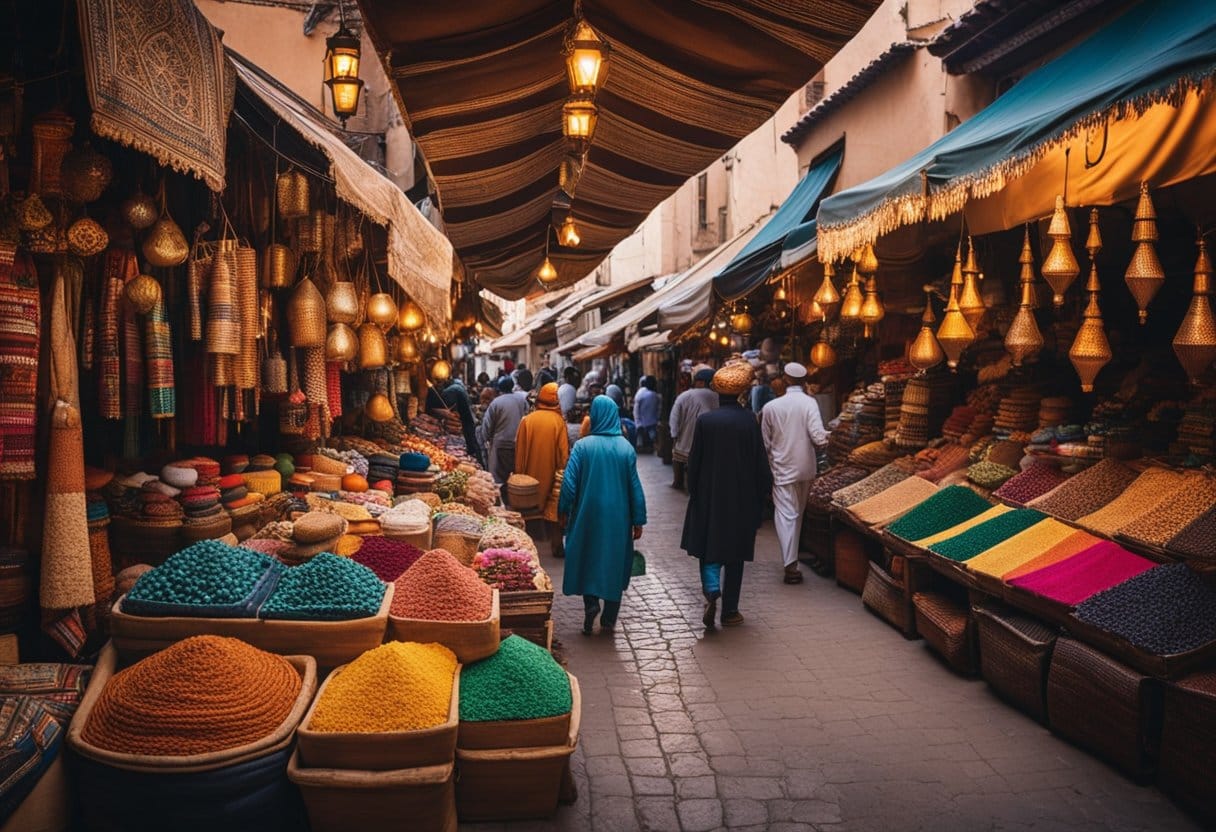
Morocco’s rich tradition of handcrafted goods offers visitors unique opportunities to witness ancient techniques firsthand. The country’s vibrant marketplaces and workshops showcase skills passed down through generations.
Rug Weaving Workshops
In 2025, you can experience authentic Moroccan rug making through interactive workshops available in several regions. The skilled artisans demonstrate techniques dating back centuries, using hand-looms and natural dyes sourced from local plants and minerals.
Many workshops offer hands-on experiences where you can learn basic weaving techniques and create small textile pieces to take home. The Atlas Mountains region features Berber communities where women craft distinctive geometric patterns, each telling a story of tribal heritage.
You’ll discover how different regions produce distinct styles – from the bold geometric designs of the Middle Atlas to the more intricate patterns of the High Atlas. These experiences often include tea ceremonies and opportunities to purchase directly from creators at fair prices.
Leather Tanneries of Fez
The ancient leather tanneries of Fez provide one of Morocco’s most memorable cultural experiences. Dating to the 9th century, these open-air workshops continue to process leather using methods unchanged for over a thousand years.
When visiting, you’ll receive a sprig of mint to counter the strong smells as you observe the iconic stone vessels filled with natural dyes. Workers wade knee-deep in colored vats, transforming raw hides into supple leather.
Many tours include visits to adjacent workshops where you can watch craftspeople fashion the leather into purses, footwear, and jackets. The best viewing points are from surrounding leather shops, where you can purchase items directly from the source.
Morning visits offer the best photography opportunities when workers are most active and colors appear most vibrant.
Souks of Marrakech: A Treasure Trove of Crafts
Marrakech’s labyrinthine souks offer some of the most authentic cultural experiences in Morocco. In 2025, guided tours help you navigate these maze-like markets while introducing you to the distinct craft sections organized by trade.
The metalworking souk dazzles with intricate lanterns casting patterned shadows across narrow pathways. In the woodworking district, you’ll find artisans carving cedar into elaborate furniture and decorative items.
Don’t miss the spice souks with their pyramids of colorful powders and the textile markets overflowing with vibrant fabrics. The magic of Morocco’s legendary souks comes alive through interactions with local merchants.
For serious shoppers, consider visiting early in the day when crowds are thinner. Many workshops connect directly to retail spaces, allowing you to watch items being created before purchasing.
Frequently Asked Questions
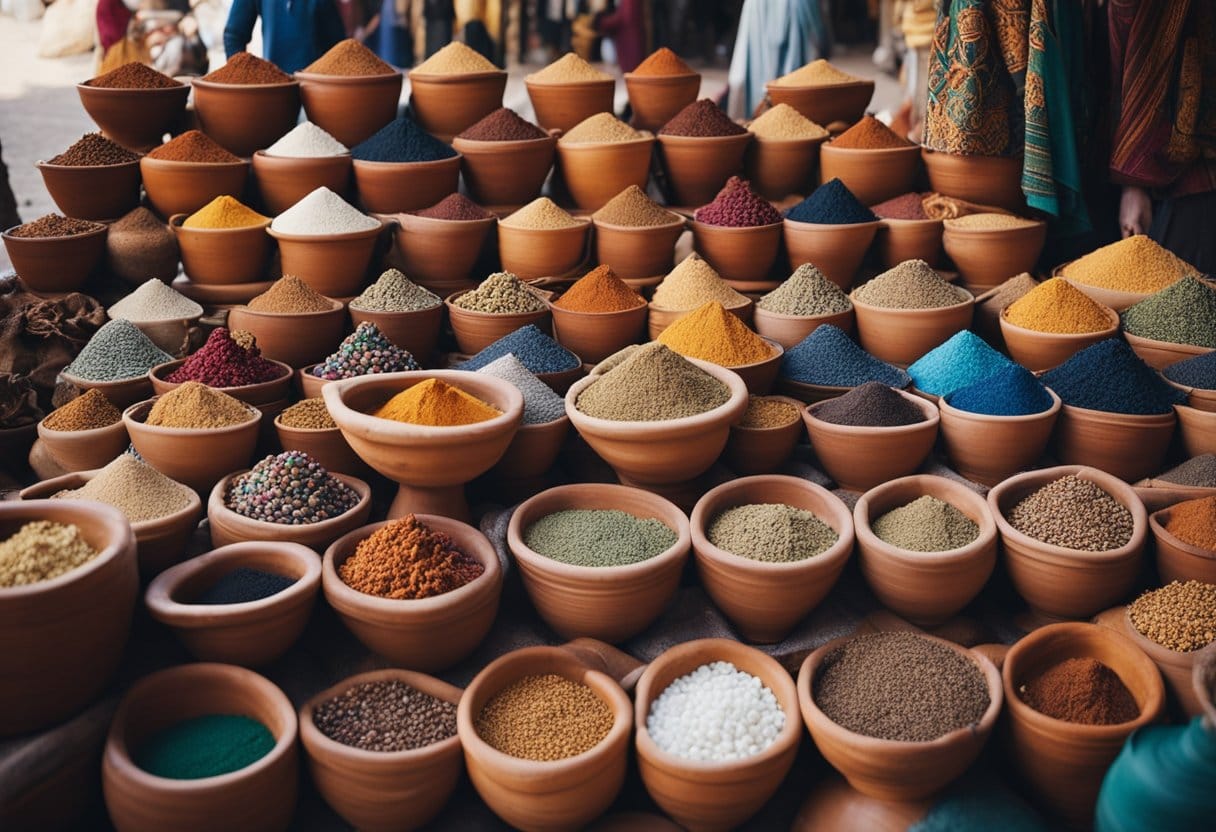
Morocco offers unique cultural experiences that blend Berber, Arab, and European influences. These answers address common questions about making the most of your cultural journey through this fascinating North African country.
What are the top cultural festivals to attend in Morocco in 2025?
The Fes Festival of World Sacred Music remains one of Morocco’s premier cultural events, featuring spiritual performances from around the world in stunning historic venues. It typically occurs in June.
Marrakech Popular Arts Festival transforms the city with street performers, music, and dance celebrations that showcase traditional Moroccan arts. This vibrant festival usually takes place in July.
The Rose Festival in El-Kelaâ M’Gouna celebrates the rose harvest with music, dancing, and a Rose Queen coronation. Visit in May to experience this fragrant celebration in the Valley of Roses.
Essaouira’s Gnaoua World Music Festival blends traditional Gnaoua music with contemporary genres. This seaside festival attracts international musicians and occurs in late June.
Which historical sites in Morocco should not be missed for an authentic cultural experience?
The ancient medina of Fez houses the world’s oldest university, Al-Qarawiyyin, and countless historical monuments. Its nearly 10,000 narrow streets offer the most authentic medieval urban experience in the Arab world.
UNESCO historical sites like Volubilis showcase remarkably preserved Roman ruins with stunning mosaics. This archaeological site provides insight into Morocco’s diverse historical influences.
Chefchaouen, the renowned “Blue City”, offers a unique cultural experience with its distinctive blue-washed buildings and Andalusian architecture.
The ancient kasbahs of southern Morocco, particularly Ait Ben Haddou, represent traditional Berber architecture. These fortified earthen buildings have featured in numerous films.
Can you recommend traditional Moroccan culinary experiences that visitors should try?
A traditional tagine cooking class lets you master Morocco’s signature slow-cooked dish. Many riads and cultural centers across major cities offer hands-on lessons where you learn authentic spice combinations.
Street food tours in Marrakech or Fez introduce you to specialties like msemen (square pancakes), harira soup, and freshly baked khobz (bread). These guided experiences help navigate the bewildering array of food stalls.
Moroccan tea ceremonies demonstrate the art of brewing and serving mint tea, a crucial hospitality ritual. Some cultural centers offer demonstrations of the dramatic high-pour technique.
Desert dining experiences offer traditional meals under the stars, often accompanied by Berber music and storytelling. These memorable dinners typically feature mechoui (slow-roasted lamb).
How can travelers respectfully participate in local Moroccan traditions?
Dress modestly, especially when visiting religious sites or rural areas. Women should cover shoulders and knees, and men should avoid shorts in traditional settings.
Learn basic greetings in Arabic or Berber languages. Simple phrases like “as-salaam alaikum” (peace be upon you) show respect for local customs and open doors to meaningful interactions.
Ask permission before photographing local people. This simple courtesy shows respect for privacy and personal boundaries, especially important in more traditional communities.
Observe Ramadan etiquette if visiting during the holy month. Avoid eating, drinking, or smoking in public during daylight hours, and be aware that some businesses operate on reduced schedules.
What are the best ways to experience Morocco’s music and arts scene?
Visit instrument workshops in the medinas of Fez or Marrakech to see traditional luthiers craft ouds, gimbris, and other Moroccan instruments. Many artisans welcome visitors and demonstrate their techniques.
Attend a lila, a traditional Gnaoua music ceremony with roots in sub-Saharan spiritual practices. These hypnotic performances feature call-and-response singing, complex rhythms, and sometimes trance dancing.
Explore contemporary art galleries in Casablanca and Marrakech to discover how modern Moroccan artists blend traditional influences with new forms. The art scene has flourished in recent years.
Book an evening at a cultural center featuring Andalusian orchestras that preserve Morocco’s classical music tradition. These performances showcase sophisticated melodies that date back to medieval Muslim Spain.
What language considerations should travelers be aware of to enhance their cultural experience in Morocco?
French remains widely spoken in urban areas and tourist establishments due to Morocco’s colonial history. Basic French phrases can help navigate situations where English is not understood.
Classical Arabic is the official language, but Darija (Moroccan Arabic) is the everyday spoken dialect. Learning a few Darija phrases shows respect and often delights locals.
Berber languages are spoken in rural and mountain regions, with Amazigh culture experiencing a renaissance. Signs in both Arabic and Tifinagh (Berber script) reflect Morocco’s multicultural identity.
Credit cards and ATMs can be used in most urban areas, but having some cash is essential for rural regions. Numbers are typically written in Western (not Arabic) numerals, making transactions easier.

